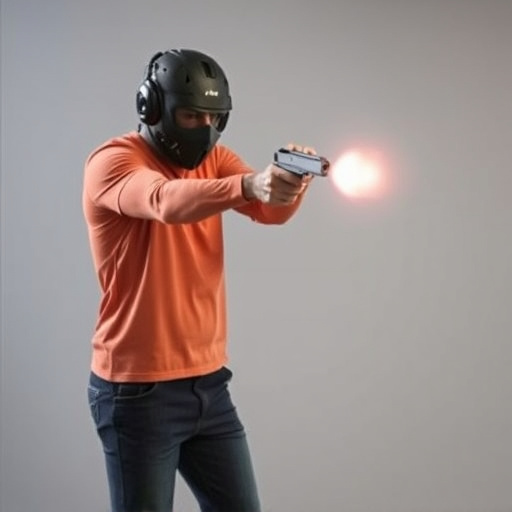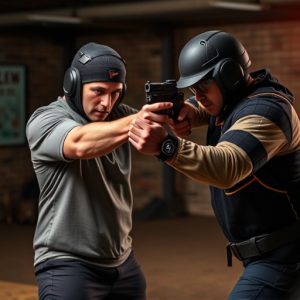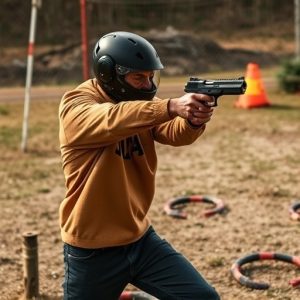Top 10 Stun Guns & Muscle Incapacitation Duration: A Comprehensive Guide
Understanding muscle incapacitation duration from stun guns is crucial for self-defense, with averag…….
Understanding muscle incapacitation duration from stun guns is crucial for self-defense, with average times ranging from 2 to 10 seconds, variable based on power output, user health, and other factors. This review examines the Top 10 Stun Guns for Personal Protection, considering power output, range, ease of use, durability, and value. Models cater to diverse needs, from discreet daily carry to powerful outdoor options, all known for reliability in critical situations. Effectiveness varies widely based on power, size, target area, environmental conditions, user attributes, and context, impacting incapacitation duration. Understanding these dynamics is key when selecting stun guns for personal protection across different scenarios.
“Uncover the shocking truth about muscle incapacitation durations caused by stun guns. This comprehensive guide explores the science behind temporary paralysis and its varying timelines. We delve into ‘Understanding Muscle Incapacitation’ to demystify this crucial aspect of self-defense.
For those seeking robust personal protection, our ‘Top 10 Stun Guns for Personal Protection’ review offers an in-depth analysis, guiding you through the best options available. Additionally, we examine factors that impact muscle paralysis duration, ensuring informed decisions in potentially life-saving scenarios.”
- Understanding Muscle Incapacitation: How Long Does it Last?
- Top 10 Stun Guns for Personal Protection: A Comprehensive Review
- Factors Influencing the Duration of Muscle Paralysis from Stun Guns
Understanding Muscle Incapacitation: How Long Does it Last?

Understanding Muscle Incapacitation: How Long Does it Last?
When considering self-defense options, especially with stun guns, understanding muscle incapacitation duration is crucial for personal safety. Stun guns are designed to disrupt an assailant’s motor function by delivering a strong electrical shock, temporarily paralyzing their muscles and rendering them incapable of physical aggression. The length of this incapacitation varies depending on several factors, including the power output of the stun gun, the contact area, and the individual’s overall health.
The average muscle incapacitation from a stun gun typically lasts between 2 to 10 seconds. However, for individuals with higher tolerance levels or specific medical conditions, this duration might be shorter or longer. Top 10 stun guns for personal protection on the market offer different power levels and contact points, each promising varying degrees of incapacitation time. Understanding these variations can help users make informed decisions based on their needs, ensuring they have the right tool to deter and disable potential threats effectively.
Top 10 Stun Guns for Personal Protection: A Comprehensive Review

When it comes to personal protection, stun guns have emerged as a popular and effective non-lethal self-defense tool. Offering a swift and powerful deterrent against potential threats, these devices are designed to incapacitate an attacker long enough for you to escape or seek help. In this comprehensive review, we explore the Top 10 Stun Guns for Personal Protection, analyzing their features, effectiveness, and user feedback to equip individuals with the best options available.
The stun guns on our list have been carefully selected based on criteria such as power output, range, ease of use, durability, and value for money. From compact and discreet models ideal for everyday carry to powerful and robust devices for outdoor adventures, this diverse range caters to various needs and preferences. Each stun gun is backed by a reputation for reliability, ensuring users can rely on them in critical situations.
Factors Influencing the Duration of Muscle Paralysis from Stun Guns

The duration of muscle incapacitation caused by stun guns varies significantly and is influenced by several factors. Among the key determinants are the power output and voltage of the device, with higher values generally resulting in longer periods of paralysis. The size and weight of the stun gun also play a role; smaller, lighter models often deliver less intense jolts, leading to shorter muscle-inability times. Another crucial factor is the target area—striking sensitive muscles or nerve clusters can prolong the effects.
Additionally, environmental conditions like temperature and humidity may impact performance. Wet or cold environments can temporarily reduce a stun gun’s effectiveness due to changes in electrical conductivity. Moreover, factors related to the user, such as muscle mass and physical fitness, can influence how long an individual remains incapacitated. The context of use—whether the person is under stress or has experience with self-defense tactics—can also contribute to varying outcomes. When considering the Top 10 stun guns for personal protection, understanding these factors is essential to assessing their reliability in different scenarios.
In conclusion, understanding the duration of muscle incapacitation from stun guns is crucial for personal safety. The article has explored this topic, highlighting the factors influencing paralysis duration and providing a comprehensive review of the top 10 stun guns suitable for personal protection. Remember that the effectiveness and duration can vary based on various factors, but having a reliable stun gun can be a game-changer in potentially dangerous situations. When choosing a stun device, consider your specific needs and always prioritize safety.


